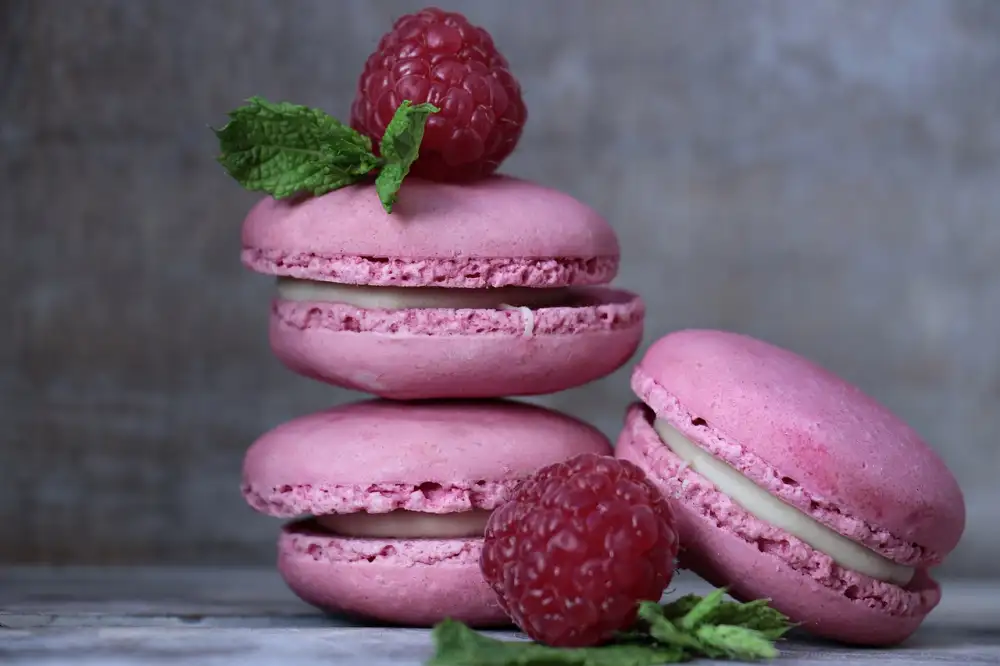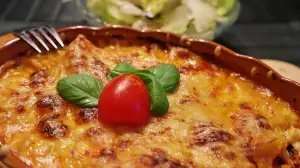Mastering Meringues: Elevate Your Dessert Game with Irresistible Recipes

- Types of Meringues: French, Swiss, and Italian
- Essential Ingredients for Perfect Meringues
- Step-by-Step Guide to Making Meringues
- Tips and Tricks for Achieving the Perfect Texture and Flavor
- Creative Ways to Use Meringues in Desserts
- Popular Meringue Recipes: Classic Pavlova and Lemon Meringue Pie
- Meringue Troubleshooting: Common Issues and Solutions
- Storage and Serving Suggestions for Meringues
Meringues are a delicate and versatile dessert that can elevate any sweet treat to new heights. With their light and airy texture, meringues add a touch of elegance to any dessert table. Whether they are used as a topping for pies or cakes, or enjoyed on their own as crispy bites of sweetness, meringues are sure to impress. In this article, we will explore the different types of meringues, essential ingredients for perfect results, step-by-step guide to making them, tips and tricks for achieving the perfect texture and flavor, creative ways to use meringues in desserts, popular recipes such as pavlova and lemon meringue pie, troubleshooting common issues, and storage and serving suggestions. Get ready to master the art of making meringues at home!
Types of Meringues: French, Swiss, and Italian
Meringues come in different types, each with its own unique characteristics. The French meringue is the most common and easiest to make. It involves whisking egg whites and sugar until stiff peaks form. Swiss meringue requires heating the egg whites and sugar over a double boiler before whisking. This results in a more stable meringue with a glossy finish. Italian meringue is made by pouring hot sugar syrup into whipped egg whites, creating a light and fluffy texture. Experiment with these different types to find your favorite!
Essential Ingredients for Perfect Meringues
To create perfect meringues, you'll need just a few essential ingredients. The first is egg whites, which are the foundation of any meringue recipe. Make sure your eggs are fresh and at room temperature for best results.
Next, you'll need sugar to sweeten the meringue and give it structure. Granulated sugar is commonly used, but you can also experiment with different types like superfine or powdered sugar for a smoother texture.
Cream of tartar is another key ingredient that helps stabilize the egg whites and prevent them from deflating. It's an acidic powder that can be found in the baking aisle of most grocery stores.
Lastly, you may want to add flavorings such as vanilla extract or lemon zest to enhance the taste of your meringues. These are optional but can add a delightful twist to your creations.
Remember, using high-quality ingredients will greatly impact the final result. So choose fresh eggs, good quality sugar, and pure extracts for the best outcome. With these essential ingredients in hand, you're ready to embark on your meringue-making journey!
Step-by-Step Guide to Making Meringues
1. Start by preheating your oven to 225°F (110°C) and lining a baking sheet with parchment paper.
2. Separate the egg whites from the yolks, making sure there are no traces of yolk in the whites. Room temperature eggs work best for meringues.
3. In a clean, dry bowl, beat the egg whites on low speed until they become frothy. Then, increase the speed to medium-high and continue beating until soft peaks form.
4. Gradually add in sugar, about 1 tablespoon at a time, while continuing to beat the mixture. This will help stabilize the meringue and create a glossy texture.
5. Once all the sugar is incorporated, continue beating until stiff peaks form. The meringue should be thick and hold its shape when the beaters are lifted.
6. To check if the sugar has dissolved completely, rub a small amount of meringue between your fingers. If it feels grainy, keep beating until smooth.
7. At this stage, you can add flavorings such as vanilla extract or lemon zest if desired. Gently fold them into the meringue using a spatula.
8. Transfer the meringue mixture onto the prepared baking sheet using a piping bag or spoon. Create individual nests or shapes according to your preference.
9. Bake in the preheated oven for about 1-2 hours or until the meringues are crisp and dry to touch. Avoid opening the oven door during baking as it may cause them to collapse.
10. Once baked, turn off the oven and leave the meringues inside for another hour to cool gradually and prevent cracking.
11. Carefully remove the meringues from the parchment paper and store them in an airtight container until ready to use.
Follow these steps closely, and you'll be able to create beautiful and delicious meringues that will impress your guests.
Tips and Tricks for Achieving the Perfect Texture and Flavor
To achieve the perfect texture and flavor in your meringues, here are some tips and tricks to keep in mind:
1. Use room temperature egg whites: Cold egg whites don't whip up as easily, so make sure to let them come to room temperature before starting.
2. Clean and dry equipment: Any trace of grease or moisture can prevent the egg whites from properly whipping up, so ensure that your mixing bowl and beaters are clean and dry.
3. Add cream of tartar or lemon juice: These acidic ingredients help stabilize the egg whites and create a sturdier meringue.
4. Gradually add sugar: Add the sugar slowly while beating the egg whites to allow it to dissolve completely. This will result in a smoother meringue.
5. Beat until stiff peaks form: Beat the egg whites until they hold their shape when the beaters are lifted. Overbeating can cause the meringue to become grainy, so be careful not to go too far.
6. Experiment with flavors: Add extracts such as vanilla or almond for extra flavor, or try incorporating other ingredients like cocoa powder or crushed nuts for added texture.
7. Pipe or spoon carefully: When shaping your meringues, use a piping bag or spoon to create consistent shapes. Take care not to deflate the mixture while doing so.
8. Bake low and slow: Bake meringues at a low temperature (around 225°F/110°C) for a longer period of time to ensure they dry out without browning too much.
By following these tips and tricks, you'll be well on your way to creating meringues with a perfect balance of texture and flavor that will impress any dessert lover.
Creative Ways to Use Meringues in Desserts
Meringues are not just a standalone dessert; they can also be used to elevate other sweet treats. Crushed meringues make a delightful addition to ice cream sundaes, providing a satisfying crunch. You can also incorporate meringue into parfaits or trifles by layering it with fruit, whipped cream, and cake. For a show-stopping dessert, try making a meringue roulade filled with fresh berries or chocolate ganache. Meringue shells can be filled with flavored creams or mousses for an elegant and light dessert option. Get creative and experiment with different combinations to add that extra touch of sweetness and texture to your favorite desserts.
Popular Meringue Recipes: Classic Pavlova and Lemon Meringue Pie
Two popular meringue recipes that are sure to impress are the classic Pavlova and the tangy Lemon Meringue Pie. The Pavlova is a showstopper dessert consisting of a crisp meringue shell filled with whipped cream and topped with fresh fruits like berries or kiwi. Its delicate texture and sweet flavor make it a crowd favorite. On the other hand, the Lemon Meringue Pie combines a buttery crust, tart lemon filling, and fluffy meringue topping. The contrast between the zesty lemon and sweet meringue creates a harmonious balance of flavors. These recipes are perfect for special occasions or when you want to indulge in a truly decadent dessert.
Meringue Troubleshooting: Common Issues and Solutions
Meringues can be a bit tricky to master, and even experienced bakers sometimes encounter issues. Here are some common problems you might face when making meringues and their solutions:
1. Flat Meringues: If your meringues turn out flat instead of light and airy, it could be due to underwhipping the egg whites. Make sure to beat them until stiff peaks form.
2. Weeping Meringue: Weeping occurs when liquid seeps out from the meringue after baking. To prevent this, make sure the sugar is fully dissolved in the egg whites before baking.
3. Cracked Meringue: Cracks can appear on the surface of meringues if they are baked at too high a temperature or cooled too quickly. Bake at a lower temperature and allow them to cool gradually in the oven.
4. Sticky Meringue: Sticky meringues are usually a result of underbaking or insufficient drying time. Increase baking time slightly and ensure they are completely dry before removing from the oven.
5. Browned Meringue: If your meringue turns brown during baking, it could be because of excessive sugar or high oven temperature. Reduce sugar or lower the oven temperature for a longer baking time.
Remember, practice makes perfect when it comes to making meringues. Don't get discouraged if you encounter any issues – just keep experimenting and adjusting until you achieve that perfect fluffy texture and crisp exterior!
Storage and Serving Suggestions for Meringues
To keep your meringues fresh and crisp, store them in an airtight container at room temperature. Avoid refrigerating them as the moisture can cause them to become soft and lose their delicate texture.
When it comes to serving meringues, they are best enjoyed soon after they are made. However, if you need to prepare them in advance, assemble the dessert just before serving to prevent the meringue from becoming soggy.
For a stunning presentation, serve meringues on a decorative platter or individual dessert plates. You can also garnish them with fresh fruits, such as berries or sliced peaches, for a burst of color and flavor.
Consider pairing meringues with complementary flavors and textures. Serve them alongside a scoop of creamy ice cream or drizzle them with chocolate sauce for an indulgent treat. Alternatively, crumble meringues over a bowl of tangy yogurt or use them as a topping for fruit salads.
Remember that meringues are delicate and can break easily, so handle them gently when serving. Use a spatula or your hands to transfer them onto plates or desserts.
By following these storage and serving suggestions, you can ensure that your homemade meringues remain irresistibly light and airy until the very last bite.
In conclusion, mastering the art of making meringues at home is a game-changer for any dessert enthusiast. With a delicate and versatile nature, meringues can elevate your dessert game to new heights. By understanding the different types of meringues, essential ingredients, and following a step-by-step guide, you can create restaurant-quality meringues in your own kitchen. Remember to experiment with flavors and textures, and don't be afraid to get creative with your desserts. With practice and patience, you'll soon become a meringue master. So go ahead, whip up some meringues and impress your guests with these irresistible treats!
Published: 19. 11. 2023
Category: Food



